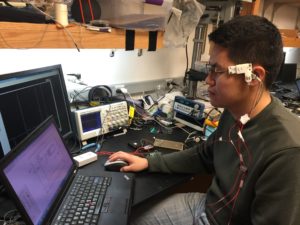Heart attack and stroke are the first and fourth leading causes of death in the United States and cost over $450 billion annually to meet healthcare needs. Hypertension is one of the most significant risk factors for both of these cardiovascular diseases (CVDs), and the American Heart Association recently redefined high blood pressure as 130/80 mmHg, as intensive blood pressure (BP) management can save lives. More intensive BP control, however, requires better compliance and reliability of BP measurement tools.
Cuff-based blood pressure measurement—today’s primary BP measurement tool—cannot support continuous BP monitoring, which would provide a better evaluation of CVD, and is subject to human error and compliance issues, rarely integrates automatically into Electronic Health Records (EHR), and has a high cost per BP reading. Cuffless BP approaches have great potential to improve BP measurement, and the rapidly growing use of information technologies (e.g. smartphones, tablets) and wearable sensors provide powerful platforms and unprecedented opportunities for self-monitoring. The current major cuffless BP technology—based on pulse transit time (PTT)—suffers from motion artifacts, changes in sensor contact force, temperature, and vascular smooth muscle tone, which have prevented it from becoming sufficiently reliable for clinical use. An ideal BP measure would feature (i) reliable measurements in both home and clinical settings, (ii) long-term continuous BP monitoring instead of single-shot BP measurements for more precise evaluation of patients’ condition, (iii) ease of use to improve compliance, such as integrating with unobtrusive wearable technology, (iv) low cost, and (v) easy integration with EHRs. To date, no such ideal BP technology exists.
At the NSG Biomedical Engineering lab, we have invented a novel BP measurement approach based on superficial temporal artery tonometry (STAT) for cuffless, continuous, and unobtrusive BP monitoring. We have validated our method theoretically using finite element analysis and further demonstrated its feasibility, accuracy and unique advantages over existing cuffless BP technologies experimentally, including all the listed features of an ideal BP technology. We are also exploring the possibility of combining multiple cuffless blood pressure techniques, including pulse transit time (PTT) and hemodynamic based methods, to further improve the accuracy and reliability of wearable cuffless blood pressure monitoring.

